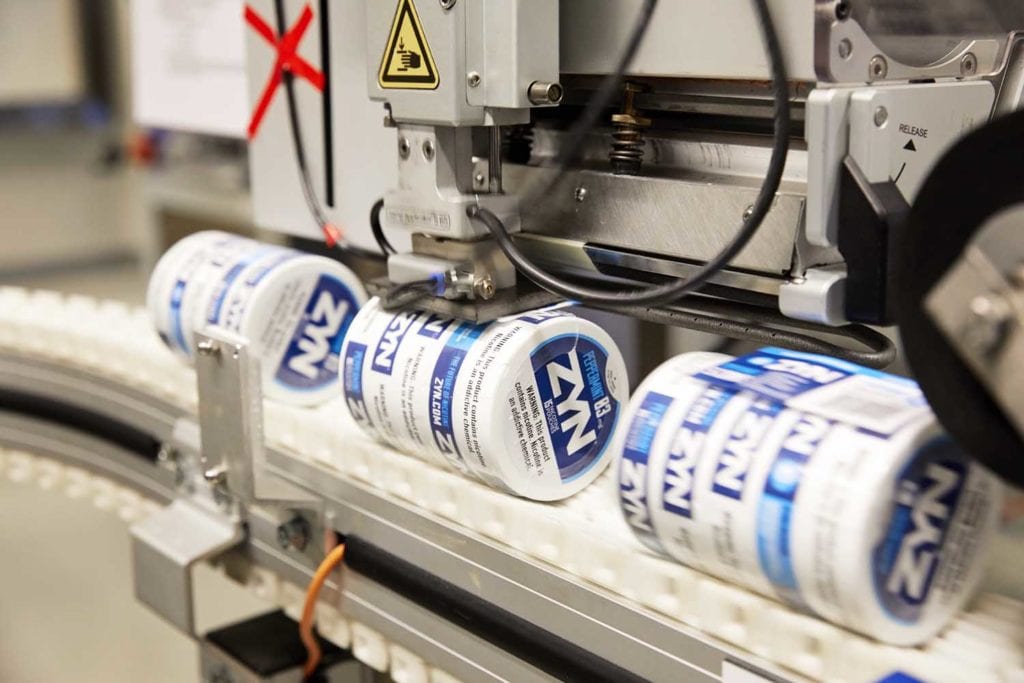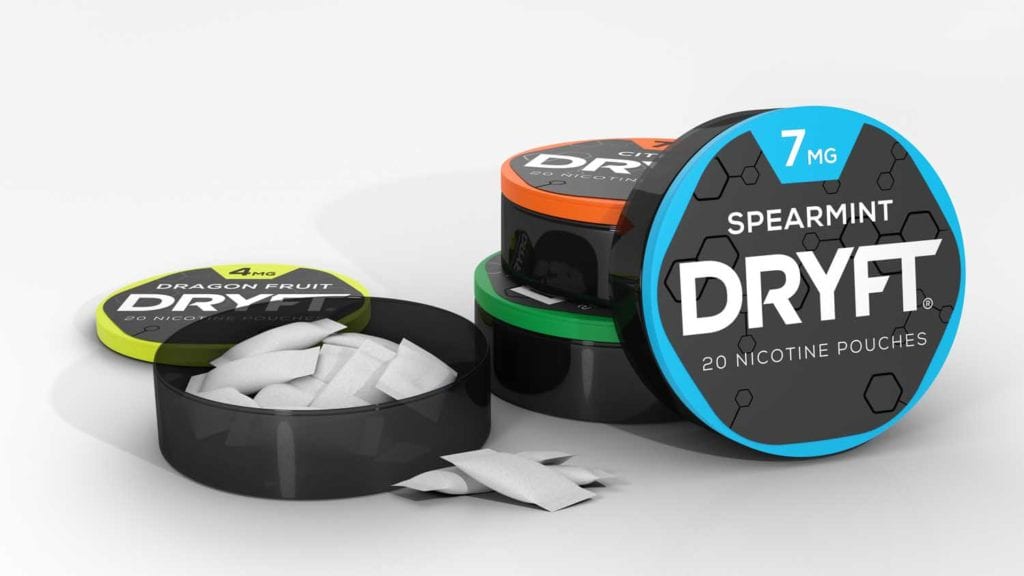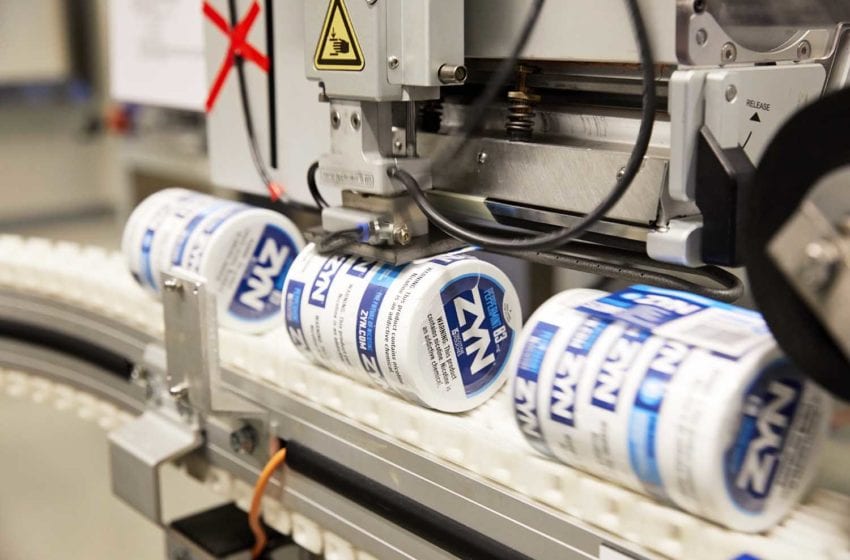
Unburdened by the legacy of traditional tobacco products, nicotine pouches are starting to catch on in a variety of markets.
By George Gay
Having been asked to look into whether interest in and sales of nicotine pouches have increased in the wake of the Covid-19 pandemic, I have to own up to failure. In my own defense, however, I would suggest that the consumer buzz around these novel products had been getting louder from well before the onset of the virus and that any additional interest caused by the pandemic would probably have been difficult to discern against that background noise.
Having said that, I did find some evidence of increased interest in nicotine pouches brought on, at least in part, by the pandemic. Jason Carignan, president of Dryft Sciences, which offers its Dryft brand of nicotine pouches in the U.S., made some interesting observations about the way that nicotine users had been reacting in the face of Covid-19 and how they might respond in the future. “Consumers are responding well to Dryft’s convenience, simplicity and functionality at a time when wearing masks is more prevalent and remaining indoors is required,” he said as part of a statement issued in response to a number of questions posed by TR. “Online subscriptions are increasingly attractive with deliver-by-mail options, and we’re receiving positive feedback about our different flavors and strengths, as well.
“We are seeing new consumers arrive at Dryft with a desire to choose nicotine without toxins that accompany combustion—yes, that is true. But those consumers are also rethinking how nicotine is viewed in public health circles. They’re seeking fact-based discussion and research. They expect us to be responsive to their feedback. And they want the freedom to responsibly choose from alternatives in a future state that presents completely new nicotine products.”

Don’t inhale
Aside from these remarks, I think there is a robust, common-sense argument to be made for why interest in nicotine pouches might have increased since the start of the pandemic. The initial information made public about Covid-19 concentrated on how the disease attacked the lungs, and so it wouldn’t have been unreasonable for cigarette smokers to have been concerned that their habit might exacerbate the damage done to their health should they contract Covid-19; this might well have led them to cast about for a form of tobacco/nicotine consumption that did not pose the same level of risk as smoking does.
So where would they have headed? Well, I think that most reasonable people would conclude that vaping is hugely less risky than smoking is, but one of the current stumbling blocks here is that vaping too involves inhalation, albeit that in this case the inhalation avoids the toxic products of pyrolysis consumed in smoking. Add to this the fact that most smokers have been exposed to a cacophony of anti-vaping propaganda put out in many cases by people who should know better, and it is probably the case that smokers would look elsewhere for relief during the Covid-19 pandemic.
And what better product than a no-burn, no-inhalation one whose low-risk credentials are backed by a comprehensive body of evidence stretching back decades? The problem here, however, is that snus, for all its advantages, comes with baggage acquired over its long history. It is beset by a back catalogue of negative health-risk reports that, while they might have been disproven, continue to weigh it down and hold it back.
Which brings the smoker to nicotine pouches. These oral products, which contain no tobacco, are new enough not to carry such health-risk baggage and, indeed, it is difficult—but, alas, not impossible—to see where even those with an obsessive interest in stopping people enjoying tobacco or nicotine products could find fault. For instance, Swedish Match’s popular Zyn brand comprises only pharmaceutical-grade nicotine salt along with food-grade ingredients, a type of formulation found in at least some brands made by other manufacturers, according to the company. And whereas the health risk of even food-grade flavors can be brought into question when such flavors are inhaled in smoke or vapor, the consumption of food-grade flavors in nicotine pouches is obviously not open to the same questions.
No virgins
Of course, manufacturers of tobacco/nicotine products can always be accused of adding flavors to attract young people to their products, but a poll by Ipsos Sweden on behalf of Swedish Match seems to indicate that nicotine pouches are adult products, at least in Sweden, to which the poll was confined. According to the results of the poll, 70 percent of nicotine pouch users are between the ages of 26 and 55—or, as a teenager might put it, between old and ancient. Importantly, too, when it comes to gateway issues, the Ipsos poll throws up evidence that nicotine pouches provide a gateway out of traditional tobacco use. While there is a low level of dual cigarette-and-pouch use, there is a high level of previous cigarette use among pouch users. Only 7 percent of nicotine pouch users have never used a nicotine product before taking up pouch use, and most nicotine pouch users consume only pouches while 14 percent use both pouches and snus, and 9 percent use both pouches and cigarettes.
Dual use often gets bad press, but it can provide an important part in a smoker’s transitioning away from cigarettes or in providing needed relief when she finds herself in a position where she cannot indulge her usual habit. Spokesperson Deborah Perez said that JTI saw its nicotine pouch brand, Nordic Spirit, as responding “to the evolving preferences of adult tobacco and nicotine consumers who are looking for a convenient product that can be used in situations where smoking or vaping is not possible.” And in an email response to TR questions, Imperial Brands, which recently added its nicotine pouch product, ZoneX, to its “asset brands” category, said that it was “assessing opportunities in OND [oral nicotine delivery] as consumers increasingly adopt a multi-category approach to nicotine.”

A smaller footprint
Meanwhile, the Ipsos poll results indicate that 55 percent of pouch users have a university education, and 80 percent are either employed or run their own company. And they also indicated that pouch consumers, who are more likely to live in urban rather than rural areas, consider themselves to be health conscious and believe it is important that the products they buy have only a small impact on the environment.
Certainly, nicotine pouches seem to be able to lay claim to having a small environmental footprint when compared with other tobacco/nicotine products, and, indeed, some other consumer products. But while their environmental credentials are important, their attraction is also visceral. Perez said that JTI’s pouch brand, Nordic Spirit, provided “a steady, long-lasting nicotine delivery.” Nicotine contents range from 9 mg/g for Nordic Spirit Spearmint Intense to 14 mg/g for Nordic Spirit Elderflower, Nordic Spirit Berry Citrus and Nordic Spirit Smooth Mint and 17mg/g for Nordic Spirit Spearmint Intense Strong.
In fact, the attraction of nicotine pouches is both visceral and practical. In the U.K. at least, where retail cigarette prices are high, nicotine pouches seem to be well ahead in the price stakes. According to Perez, Nordic Spirit sells there for £6.50 ($8.15) for a pack of 20 whereas, according to U.K. government figures, the average price of a pack of 20 king-size cigarettes is £11.10.
Given all of the above, it’s not surprising that, just over a year ago in the U.S., Swedish Match went national with Zyn, which it had launched there in 2015; nor that it opened a 16,000-square-foot addition to its production facility in Owensboro, Kentucky, to provide additional capacity to deal with the demand for this brand.
Perez, meanwhile, was able to report that Nordic Spirit, which was developed in Sweden and launched in 2018, has rapidly grown market share and is now available in Austria, the Czech Republic, Denmark, Sweden, Switzerland and the U.K. “While the tobacco-free nicotine pouches category is still in its infancy, we expect that many adult tobacco and nicotine consumers globally will be interested in trying the product, helping the new category to grow significantly over the coming years,” she said.
But perhaps one of the strongest indications that manufacturers have confidence in the nicotine pouch category came with the announcement by Altria in the middle of May that it had submitted “premarket tobacco product applications to the U.S. Food and Drug Administration for 35 On! products on behalf of Helix Innovations, an Altria joint venture responsible for manufacturing and selling On! nicotine pouches globally.”
“On! products, in seven flavors and five nicotine levels, offer the broadest portfolio of choices in the fast-growing nicotine pouch category for adult tobacco consumers seeking alternatives to traditional tobacco products,” Altria said in its May announcement, which quoted Paige Magness, senior vice president of regulatory affairs for Altria Client Services. “On! nicotine pouches are a key part of our vision to responsibly lead the transition of adult smokers to a noncombustible future,” said Magness. “We believe the supporting science is strong and are committed to working with the agency on these important product submissions.”
It seems reasonable to assume that no manufacturer, no matter how deep its products, would enter the labyrinthine caves of the FDA’s application processes unless it was confident the products it was submitting for review were almost assured of consumer acceptance and market success—or unless it were accompanied by Theseus, of course.














